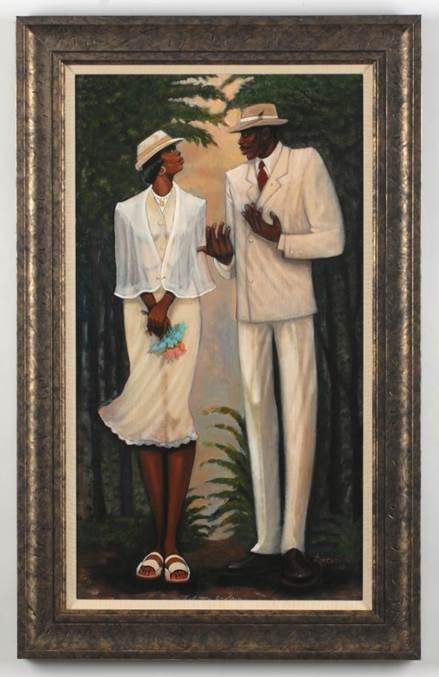
The Paul R. Jones Museum presents When They See Us, What Do They See?: Perspectives on Black Art, August 7 – September 25, 2020, curated by Barbara-Shae Jackson. While Tuscaloosa and The University of Alabama practice safe distancing, the museum is open by appointment only. Call (205) 345-3038 or email the director for more information.
What does the aesthetic experience of a person perceiving a work of art look like when it does not reflect their culture or life experience? That is the question that Barbara-Shae Jackson, a doctoral student in cognitive psychology at UA, asked for her recent study, The Color Line: The Influence of Culturally Mediated Cognition, Openness and Racism on Aesthetic Experience. Her study examined perceptions and responses of black and white viewers to art created by black and white artists. Then Jackson developed an exhibition from her research.
“This is the first time a doctoral candidate has used artwork from the collection in their research,” said Curator Emily Bibb, “and we’re excited to have members of the UA community working with the Jones Collection in new ways. Every added perspective deepens our connection to these pieces. Classes in multiple disciplines have worked with the collection in a variety of ways over the years, and this exhibition shows how valuable of a resource the collection continues to be to all students, even in unexpected fields.”
Using works for her study by black artists from the Paul R. Jones Collection of American Art at The University of Alabama and works by white artists, Jackson examined the responses and reactions of her study participants, a randomly selected group of white and black people, to artworks created by black and white artists. She wanted to know if there are differences in an individual’s aesthetic experience because of the responder’s race and the style of art viewed. For white people, these perceptions of black art and black people, Jackson theorizes, are rooted in whites being culturally conditioned to see black bodies and black culture as lesser, or at the very least, different from their own experiences.
As Jackson writes in the introduction to the exhibition, “The artworks vary in style, medium and subject matter, but all are reflective of Black culture and were created by Black artists. They were used in the study to gather perspectives from Whites and Blacks on their experience with a Black aesthetic.”
The inspiration for Jackson’s study, The Color Line, grew out of the oppression and degradation of black bodies and black experience in the United States. Particularly, the high number of cases of police brutality on unarmed blacks for petty crime, or no crime at all as well as the disproportionate rate of convictions, and harshness of punishment, of innocent blacks compared to their white counterparts. When They See Us is an exhibit that asks, “What lies at the root of these historical and contemporary occurrences?”
While The University of Alabama operates in a limited capacity in order to stem the spread of COVID-19 and to ensure the safety of our visitors and staff, the Paul R. Jones Museum is open by limited appointment only. Call the museum at (205) 345-3038 or email the director for more information. The Paul R. Jones Museum is located at 2308 Sixth Street, Tuscaloosa, Alabama, 35401. Hours are Monday–Friday 9:00 a.m.–5:00 p.m. and First Friday of each month, 12 noon until 8:00 p.m.
For more information about The University of Alabama’s programs in art history and studio art, visit our Degree Programs page.